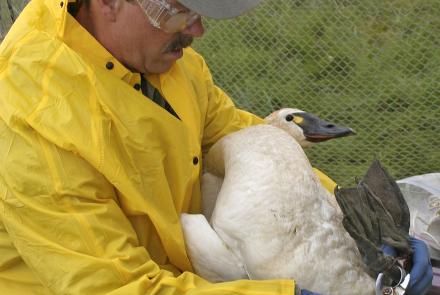
Earth's coldest spot is not in Alaska
SAN FRANCISCO — Last July, while we Alaskans enjoyed another warm day, the surface temperature dropped to minus 135.3 degrees Fahrenheit in an icy trough on a south-facing ridge in western Antarctica. According to the man who noticed the temperature, Ted Scambos at the National Snow and Ice Data Center in Boulder, Colo., that and another day during Antarctica’s polar night are the coldest surface temperatures yet recorded on Earth.
“It’s more like what you would see on Mars on a summer day,” Scambos said during a press conference here at the Fall Meeting of the American Geophysical Union. Scambos is one of more than 20,000 scientists who will attend the week-long gathering of Earth and space scientists. His subject was apt as the San Francisco area experienced clear skies and what local meteorologists termed a “cold snap,” with low temperatures below freezing and the patchy formation of sidewalk ice, a foreign substance in the Bay Area.
Scambos noticed the unearthly temperatures while looking at data from remote sensing satellites, including the new Landsat 8, launched last February. The satellite orbits over Antarctica (and Alaska) and has a sensitive temperature sensor onboard.
With it, Scambos saw the cold temperature from this July and an even lower minus 136 degrees Fahrenheit on Aug. 10, 2010.
The official world record is the minus 128.6 Fahrenheit recorded at the Russian Vostok Research Station in East Antarctica in 1983. Scambos said the satellite records won’t be official because the Vostok record was from a thermometer mounted about 6 feet off the ground, as is the standard for meteorologists.
“The air would probably be 1 or 2 degrees warmer at 2 meters,” he said. If someone were to install a similar weather station at the sites the satellite measured, its temperature sensor would probably knock off the Vostok record.
“There’s a record yet to be measured,” he said. “I’m confident these places are the coldest pockets on Earth,” he said. “We’re talking about temperatures 50 degrees colder than anything seen in Alaska or Siberia.”
The cold spot intrigues Scambos because it makes him wonder if there’s a physical limit to how cold Earth can get. The Antarctic cold spots are just off Dome A at about 15,000 feet elevation. The coldest air forms when already chilled air slides down the mound and settles in pockets, where it cools further. Weather systems that buttress the pool of cold air and prevent it from sliding probably intensify the cold, Scambos said.
Because the satellite also passes above Alaska in its orbit, Scambos said it might be possible to use it to find Alaska’s cold spots, though he’s going to concentrate on Greenland and Antarctica.
Making this possibility enticing is that Alaska’s all-time low of minus 80 degrees Fahrenheit, recorded Jan. 23, 1971 at Prospect Creek, is just one degree off North America’s all-time low. Canadian meteorologists measured that at a now-defunct airstrip at Snag in the Yukon Territory, just 15 miles from where the Alaska Highway passes near Beaver Creek in the Yukon. The 81 below measured there happened on Feb. 3, 1947.
Alaska has come close to that revered number in the recent past, making meteorologists think 81 below could be bested if a thermometer sat in the right spruce bog. On Jan. 27, 1989, Galena dropped to 70 below, McGrath 75 below, and Tanana 76 below. Weather observers Dick and Robin Hammond of Chicken, Alaska recorded minus 72 degrees Fahrenheit during their 8 a.m. thermometer check on Feb. 7, 2008. Two days later, Larry and June Taylor — also official observers for the National Weather Service — recorded the same temperature at O’Brien Creek off the Taylor Highway.





